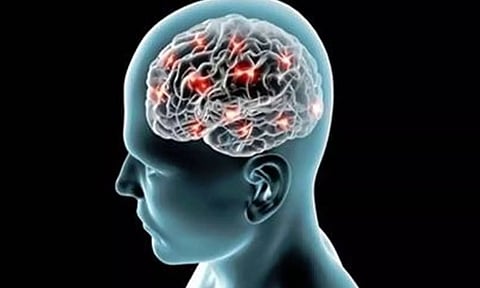

WASHINGTON: When deciding how to behave in socially awkward situations, anxious people use a different part of the forebrain than non-anxious people. According to a study by Bob Bramson and Sjoerd Meijer of Radboud University's Donders Institute, this can be seen in brain scans.
For instance, two people who aren't anxious and who have been in love for a while run encounter each other. They both feel awkward and want to ask the individual out on a date.
But do you approach that individual directly? Or do you hide your sight of them to spare yourself the embarrassment? An anxious individual finds it much harder to approach the potential partner than a non-anxious person since they are unable to suppress their anxiety.
Bramson said, "Anxious people use a less suitable section of the forebrain for this control. It's more difficult for them to choose alternative behaviour, so they avoid social situations more often."
Decisions like this demand a balancing act between a possible threat and a reward, a decision that non-anxious people make in the prefrontal cortex. Researchers at Radboud University have now shown that socially anxious people use a different section in the forebrain for decisions like this.
Bramson and Meijer studied brain scans to see what happens in anxious and non-anxious people in a simulated social situation.
"Our trial subjects were shown happy and angry faces and had to first move a joystick towards the happy face and away from the angry face. At a certain point they had to do the reverse: move towards an angry face and away from a happy face. This demands control over our automatic tendency to avoid negative situations."
Anxious people proved to perform just as well as non-anxious people in this simple task, but the scans showed that a completely different section of the brain was active.
"In non-anxious people, we often see that, during emotional control, a signal is sent from the foremost section of the prefrontal cortex to the motor cortex, the section of the brain that directs your body to act. In anxious people, a less efficient section of that foremost section is used."
Other scans showed that the reason for this is probably because the 'correct' section becomes overstimulated in anxious people. "This could explain why anxious people find it difficult to choose alternative behaviour and thus avoid social situations. The disadvantage of this is that they never learn that social situations aren't as negative as they think."
For the first time, brain scans have now shown that the forebrain of anxious people works differently from that of non-anxious people with regard to control of emotional behaviour. The researchers think that the results could be used to develop new treatments for people with anxiety.